The Therapy on Wheels program launched by Aash has been a boon for kids with disability in Himachal Pradesh.
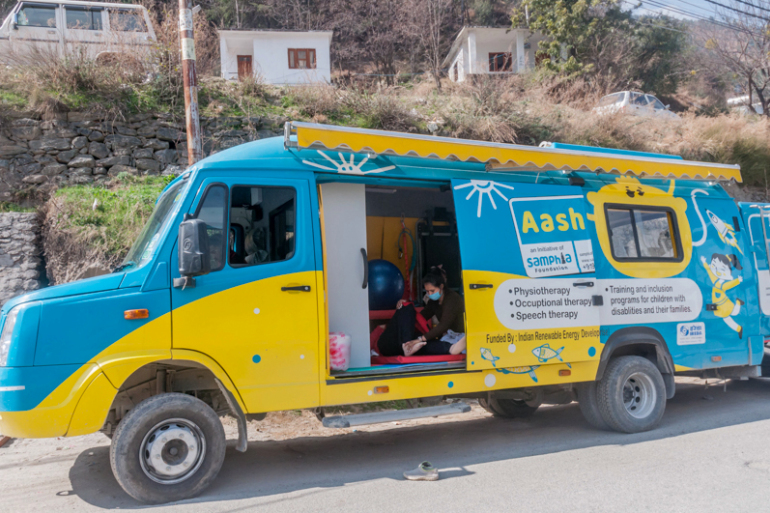
Bus brings ‘hope’ to the doorstep of India’s disabled children
Group runs Therapy on Wheels programme for children with developmental disabilities in Himachal Pradesh’s remote villages.
A bus, coloured in bright blue and mustard yellow, grinds to a halt by the wayside in Badah, a remote village tucked away in the Himalayan mountains of Himachal Pradesh state’s Kullu district.
The bus, more like a minibus, may seem like any of the other commuter vehicles that ferry thousands of tourists across the hill state in northern India every year.
But this one is different.
As the back door of the bus opens and an electronic ramp is lowered, Mridul, 7, is carried in by his mother, Shakti Bhardwaj.
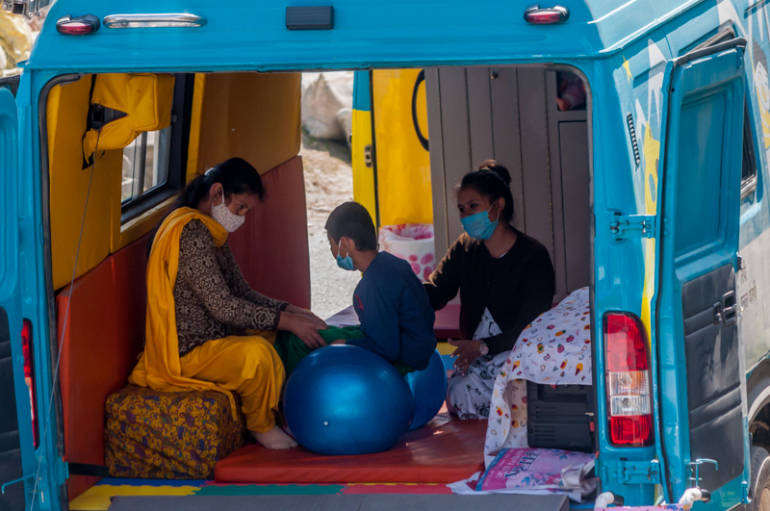
Over the next hour, Mridul works on his mobility with physiotherapist Rekha Thakur, also the co-founder of Aash Child Development Centre.
Once through with the session, the child boards a car to be ferried back to the comfort of his home while the bus moves to its next destination.
To mark World Disability Day, folks at Aash on December 3 last year rolled out the blue and yellow minibus as part of their Therapy on Wheels programme.
The initiative seeks to make treatment accessible for children with developmental disabilities across Himachal Pradesh.
It has brought hope – Aash means “hope” in the local dialect – for mothers such as Shakti, who would otherwise have to make the tedious commute to a centre in Kullu town, an hour away.
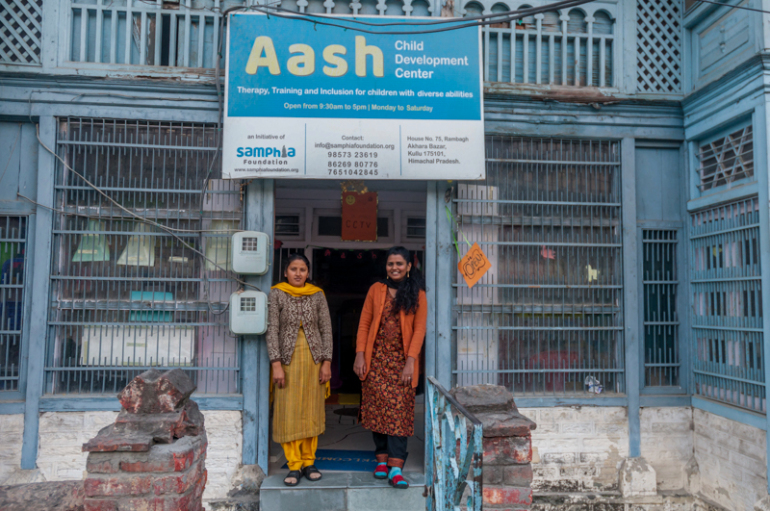
The idea first came to co-founder Shruti More, an occupational therapist by qualification, when she was taking a bus ride more than a year ago.
“I joked with a friend, ‘what if we had a bus that could have our entire centre on it?’ It kind of stayed with me there on,” More recalls.
The bus, funded by the Indian Renewable Energy Development Agency, is a mobile therapy clinic, and has equipment therapists need, including a treadmill.
“We don’t have any restrictions in terms of aids or equipments. Everything at the centre is now on the minibus,” says More.
“The therapy intervention that we provide is play-based. So, while designing the minibus, we had to ensure it isn’t associated with going to a doctor or a clinic. It’s supposed to be a happy place.”
In the past, the team would travel to remote corners of the state to work with children. The limitations were aplenty, the inability to carry equipment to their homes being a frustrating one.
The other option was for the children to be brought to the centre – an ordeal for boys such as five-year-old Reyansh, who suffers from cerebral palsy.
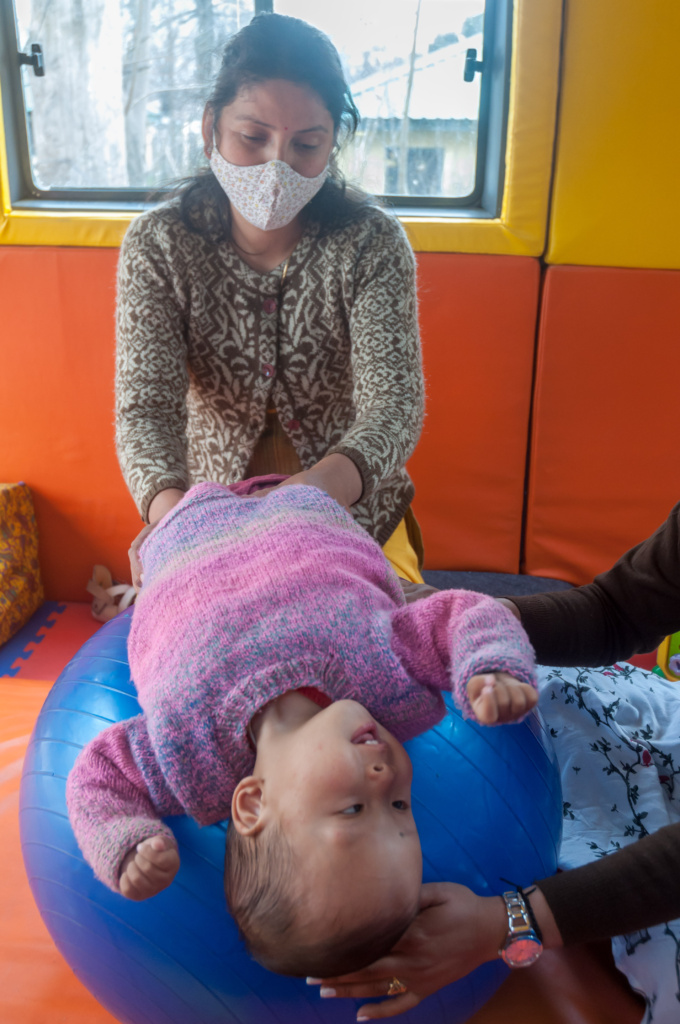
Reyansh had to be carried during a 90-minute hike through the jungle to the nearest bus stop, followed by an hour-long bus ride.
As a result, most of the children who lived in far-off regions had access to therapy only when the team could visit them.
“Travelling is a major issue for some, especially with kids who are now older and cannot be carried around. Weather is also a big factor in the mountains. We have about 170 children registered with us, but most couldn’t reach out in the past. Through the bus, we have covered half the distance for a lot of them,” Thakur says.
Most children the team works with are from newborns up to seven years of age, considered the best period for early intervention to address developmental delays.
“A child starts rolling by six months and is standing, say after a year. If, for some reason, he is unable to attain these milestones, it is what we call developmental delays. Beyond seven is when we usually call it a disability, except where the damage is more permanent like in the case of genetic or physiological conditions,” More explains.
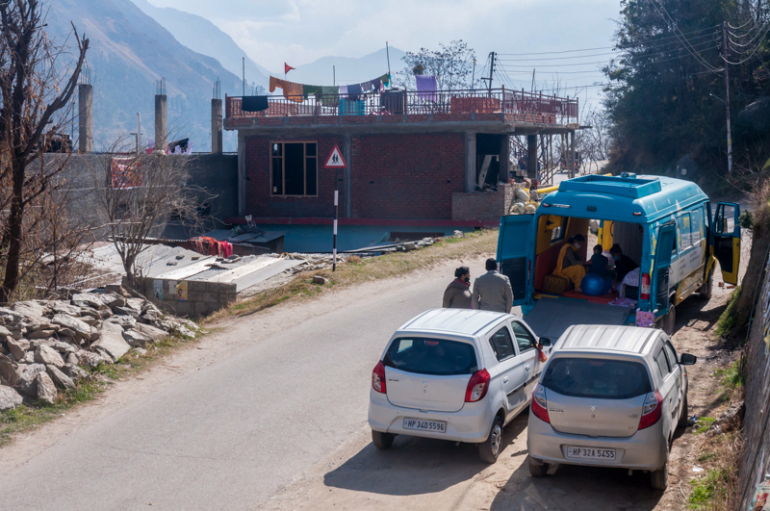
According to the 2011 census, Himachal Pradesh has 31,204 disabled residents between the age of 0-19 years. The state has no facilities to tackle such medical conditions, especially for children.
Most families in the past had to travel as far as Chandigarh city or the national capital New Delhi – both requiring overnight bus journeys – to get treatment or therapy for their children.
It is what makes Aash’s work all the more critical, as the team gradually expands their network across the state.
In some faraway districts such as Spiti and Lahaul, the team has conducted camps and hosted primary school teachers from these regions at their Kullu training centre.
While things are more streamlined these days, the team says it was different when they started out. Then, there was little awareness about remedial therapy for children with developmental issues.
Thakur recalls cases where parents would not take children with disabilities outside their homes. Others said they did not find the need for intervention even when the early signs were evident.
In a region that puts a lot of faith in local deities, More realised that a lot of people would visit a “gur” or priests for solutions instead of using therapy.
In this Himalayan region, most villages have a “gur”, a shaman-like figure who helps the villagers communicate with their deity.
“It’s a tricky situation that must be tackled with care when it comes to people’s beliefs. We tell them to follow the spiritual path, but also work on therapy as a possible solution,” says Beeju, a team member who goes by his first name and works with the local communities to spread awareness.
Last year, the team decided to make the most of the annual Dussehra festival, where residents from around the valley gather in Kullu for festivities. They went around disseminating information about their work.
Over time, they realised a lot of new cases were coming in after the celebrations.
Before visiting a new region, Beeju said he connects with local health workers and village council members to spread the word on their work and identify children in need of therapy.
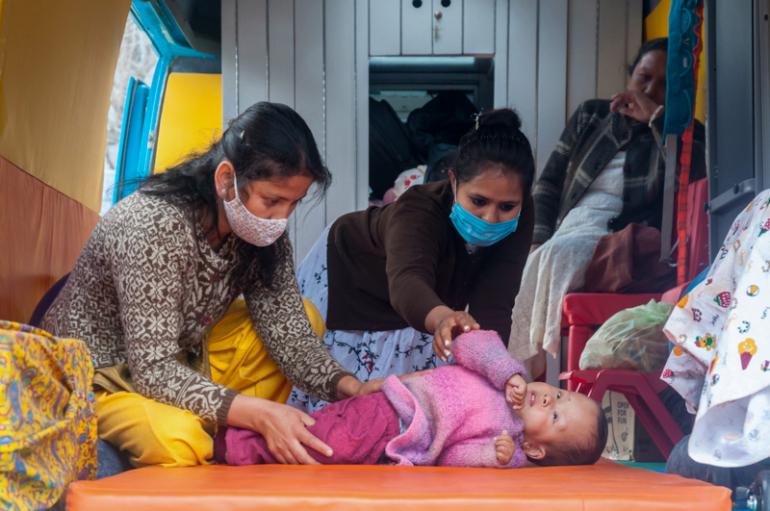
Thrice a week, the minibus accompanies a mobile clinic run by the government hospital in Kullu. In future, Aash hopes to partner with the central government to set up early intervention centres across the state.
“In Himachal [Pradesh], disability care is at a very nascent stage as compared to other states … (We) hope to increase our outreach through it in order to have a greater impact,” says More.
Every few months, Aash conducts sessions for parents to help build them a support system of their own, besides helping them cope with their children’s condition.
“I would get really worked up while dealing with my son, Shivansh. There was a time he didn’t know how to get up from the floor, let alone walk. It would upset me since I used to compare him with other kids,” says Bharti Chauhan, a mother.
“The most important thing I have learnt at these sessions is to be patient. It has helped both of us progress. It’s an incredible feeling to see him do things on his own these days.”
Aash’s efforts over the years are gradually bearing fruit. Years after suffering a paralysis attack, Shivansh is now mobile. Mridul is able to eat meals on his own.
“When we had imagined it, we wanted to reach out to every child who is in need of therapy. And we are able to do that today, which is really fulfilling,” says More.